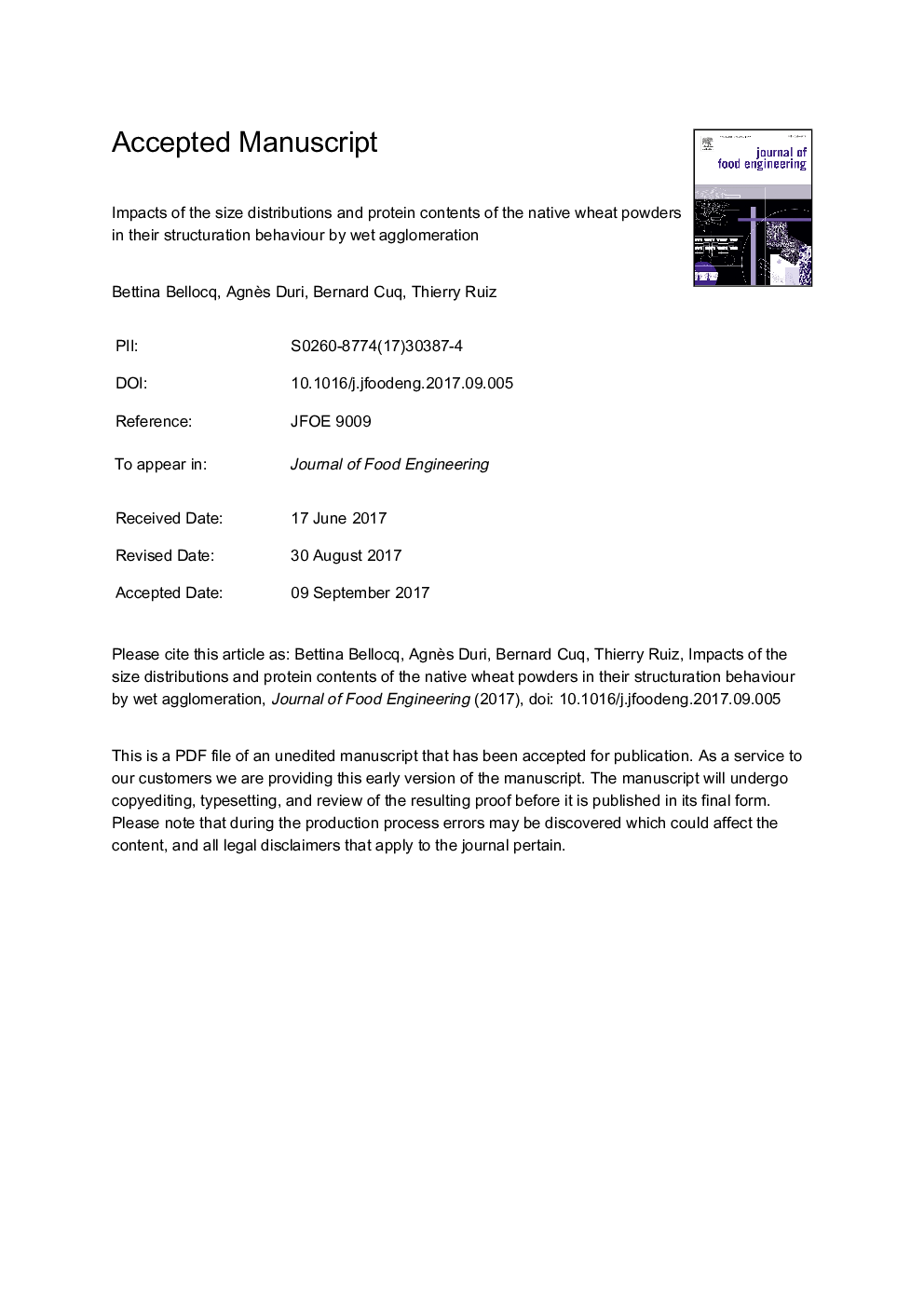| Article ID | Journal | Published Year | Pages | File Type |
|---|---|---|---|---|
| 6664846 | Journal of Food Engineering | 2018 | 31 Pages |
Abstract
The control of the wet agglomeration processes of powders depends on the contribution of the characteristics of the native powders. The objective of this work is to specifically investigate the contribution of the size distribution (d50 and span) and composition (the protein contents) of the native particles, on the dimensional and structural characteristics of the wet agglomerates. Different fractions of native semolina with contrasted size properties (d50 and span) and protein content are used as raw materials. The wet granulation is conducted using a low shear granulator and liquid spraying condition at constant dimensionless spray flux. The structure properties are evaluated by the distribution of the measured values of the size, water content and compactness. We observed specific effects of the span and the median diameter of native powders on the size distributions of the wet agglomerates. Using small native particles (d50 < 250 μm) improves the homogeneity of the size distributions. Using slightly dispersed native particles (span < 1.0) leads to a better uniformity on the size distributions. Using semolina with high protein content could lead to a narrow size distribution by limiting the process of fragmentation and the formation of fragments in the bed. We showed that the mechanisms involved in the agglomeration process are similar whatever the size distribution and the protein content of the native powders.
Keywords
Related Topics
Physical Sciences and Engineering
Chemical Engineering
Chemical Engineering (General)
Authors
Bettina Bellocq, Agnès Duri, Bernard Cuq, Thierry Ruiz,
